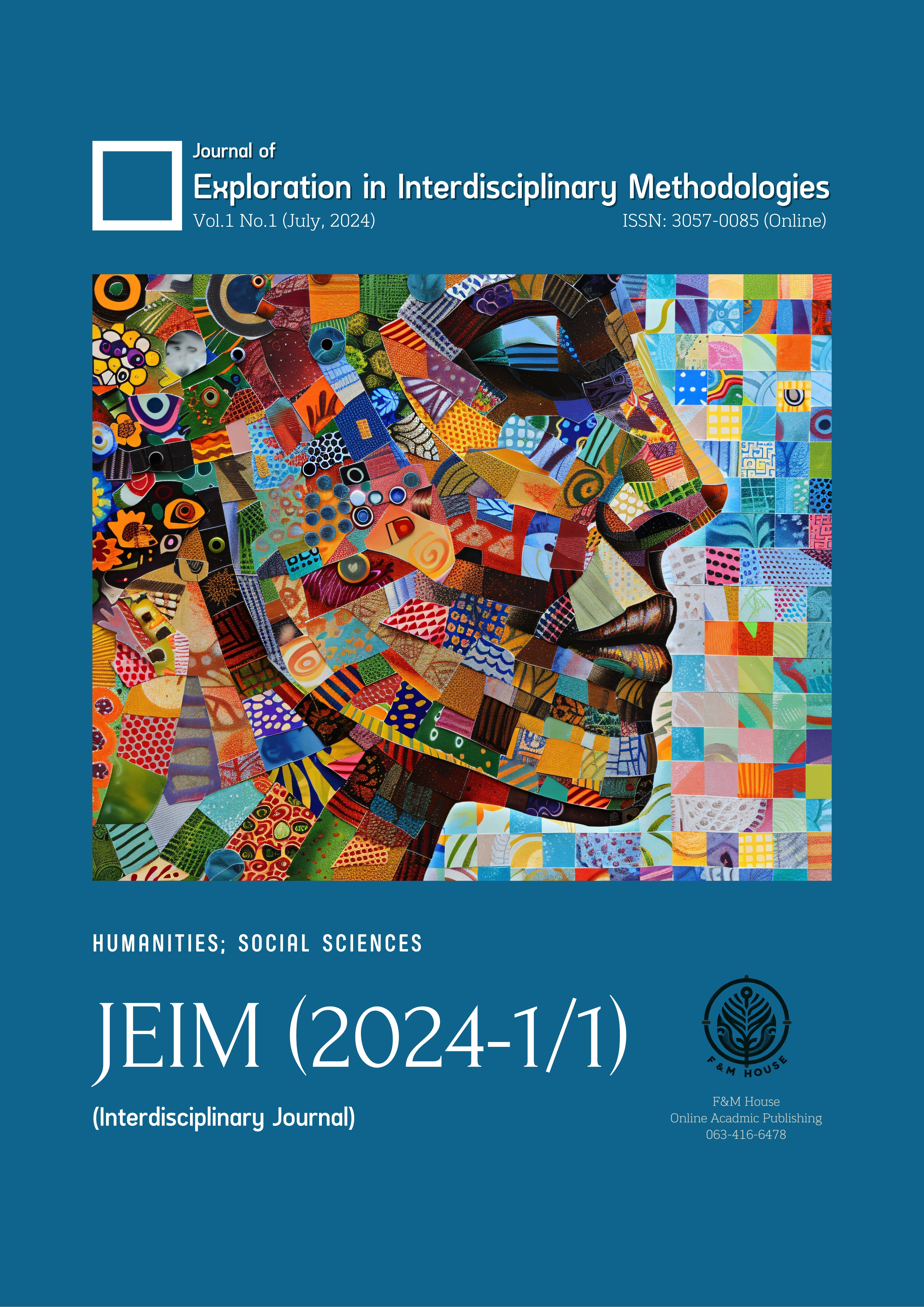The Sociology of Aging: Challenges and Innovations
คำสำคัญ:
Aging populations, elder care, social isolation, technological innovations, policy reformsบทคัดย่อ
As global populations age, societies face a wide range of challenges related to economic insecurity, healthcare access, social isolation, and ageism. These challenges require innovative solutions that combine technological advancements, healthcare reforms, community-based programs, and supportive policies. This paper explores the key challenges associated with aging, including the financial and emotional burdens on caregivers and the growing demand for elder care services. It highlights emerging innovations, such as assistive technologies, telemedicine, integrated care models, and policy reforms that promote sustainable and inclusive aging solutions. Additionally, the paper examines case studies from Japan, the Nordic countries, and the U.S. that illustrate how different regions are addressing aging through technology, community engagement, and policy efforts. As aging populations continue to grow, the importance of investment in aging research, policy reforms, and community support systems is paramount to ensure that older adults can age with dignity, autonomy, and social inclusion.
เอกสารอ้างอิง
AARP Public Policy Institute. (2020). Valuing the Invaluable: 2020 Update. AARP.
Andaya, B. W., & Andaya, L. Y. (2015). A History of Early Modern Southeast Asia, 1400- 1830. Cambridge University Press.
Anderson, B. (1991). Imagined Communities: Reflections on the Origin and Spread of Nationalism. Verso.
Askew, M. (2002). Bangkok: Place, Practice and Representation. Routledge.
Bloom, D. E., Canning, D., & Lubet, A. (2010). Global Population Aging: Facts, Challenges, Solutions. Daedalus, 139(2), 41-54.
Boult, C., et al. (2011). The Effectiveness of a Care Coordination Intervention for Older Adults with Multiple Chronic Conditions: A Randomized Controlled Trial. JAMA, 310(17), 1827-1836.
Chan, K. B., & Rodan, G. (2003). Globalization, Local Culture, and Identity: Social Change in Singapore. Asian Journal of Social Science, 31(3), 424-446.
Cohen, E. (2001). Thai Tourism: Hill Tribes, Islands and Open-Ended Prostitution. Tourism and Cultural Change, 25(3), 101-123.
Czaja, S. J., et al. (2020). Technology Adoption Among Older Adults: Findings From the PRISM Trial. The Gerontologist, 60(1), 45–55.
Emmerson, D. K. (1984). Southeast Asia: What's in a Name? Journal of Southeast Asian Studies, 15(1), 1-21.
Esping-Andersen, G. (2017). The Three Worlds of Welfare Capitalism. Princeton University Press.
Espiritu, Y. L. (2003). Home Bound: Filipino American Lives across Cultures, Communities, and Countries. University of California Press.
Family Caregiver Alliance. (2019). Caregiver Education and Training Programs. Family Caregiver Alliance.
Golant, S. M. (2014). Age-Friendly Communities: Are We Expecting Too Much? Generations, 38(1), 26-33.
Hall, S. (1992). The Question of Cultural Identity. In S. Hall, D. Held, & T. McGrew (Eds.), Modernity and Its Futures (pp. 273-325). Polity Press.
Harms, E. (2011). Saigon's Edge: On the Margins of Ho Chi Minh City. University of Minnesota Press.
Harper, S. (2014). The Challenge of Longevity: Making Societies Fit for an Ageing World.
Nature, 514(7523), 336-337.
Hoffman, G. J., et al. (2018). Aging, Social Services, and Care Systems: Findings from the WHO Study on Global Aging and Adult Health.
Holt-Lunstad, J., Smith, T. B., & Layton, J. B. (2015). Social Relationships and Mortality Risk: A Meta-Analytic Review. PLOS Medicine, 7(1).
Jensen, P. H., & Hansen, H. K. (2020). Cohousing for Older People in Denmark: An Alternative to Care Homes?. Journal of Housing for the Elderly, 34(1), 47-61.
Kasper, J. D., et al. (2018). The Disproportionate Impact of Dementia on Family and Unpaid Caregiving to Older Adults. Health Affairs, 37(1), 73-81.
KFF (Kaiser Family Foundation). (2021). Medicare and Long-Term Care.
Levy, B. (2009). Stereotype Embodiment: A Psychosocial Approach to Aging. Current Directions in Psychological Science, 18(6), 332-336.
Mayo Clinic. (2020). Respite Care: What Caregivers Should Know. Mayo Clinic.
Mitzner, T. L., et al. (2019). Older Adults Talk Technology: Technology Usage and Attitudes.
Computers in Human Behavior, 26(6), 1710-1721.
National Alliance for Caregiving. (2020). Caregiving in the U.S. 2020. AARP.
National Institute on Aging. (2021). Financial Help for Caregivers. National Institute on Aging.
National Institute on Retirement Security. (2020). Retirement Insecurity 2020: Americans' Views of Retirement.
Nelson, T. D. (2016). Ageism: Stereotyping and Prejudice Against Older Persons. MIT Press. Newman, S., & Hatton-Yeo, A. (2008). Intergenerational Learning and the Contributions of
Older People. Ageing Horizons, 8, 31-39.
OECD. (2017). Pensions at a Glance 2017. OECD Publishing.
Picard, M. (1996). Bali: Cultural Tourism and Touristic Culture. Archipelago Press.
Plouffe, L., & Kalache, A. (2010). Towards Global Age-Friendly Cities: Determining Urban Features that Promote Active Aging. Journal of Urban Health, 87(5), 733-739.
Reid, A. (1993). Southeast Asia in the Age of Commerce, 1450-1680, Volume Two: Expansion and Crisis. Yale University Press.
Samuels, J. (2015). Youth, Media, and Identity: Modernity in Southeast Asia. Routledge. San Juan, E. (2009). Balikbayan: A Filipino Experience of Transnationality. Rowman &
Littlefield Publishers.
Schulz, R., & Eden, J. (Eds.). (2016). Families Caring for an Aging America. National Academies Press.
Sherrington, C., et al. (2019). Exercise to Prevent Falls in Older Adults: An Updated
Systematic Review and Meta-Analysis. British Journal of Sports Medicine, 53(19), 1062-1067.
Sinclair, D. A. (2019). Lifespan: Why We Age—and Why We Don’t Have To. Atria Books. Tang, F., & Lee, Y. (2011). Home and Community-Based Services Utilization and Aging in
Place. Home Health Care Services Quarterly, 30(3), 171-188.
Thongchai, W. (2011). Silk and Style: Fashion in Contemporary Thai Culture. Journal of Southeast Asian Studies, 42(3), 567-586.
Tomlinson, J. (1999). Globalization and Culture. University of Chicago Press.
UNESCO. (2009). Batik of Indonesia. Retrieved from
https://ich.unesco.org/en/RL/indonesian-batik-00170
United Nations. (2019). World Population Prospects 2019. United Nations Department of Economic and Social Affairs.
Weintraub, A. (2010). Dangdut Stories: A Social and Musical History of Indonesia's Most Popular Music. Oxford University Press.
WHO. (2015). World Report on Ageing and Health.
World Bank. (2016). Live Long and Prosper: Aging in East Asia and Pacific. World Bank Group.
World Health Organization. (2015). World Report on Ageing and Health. WHO. World Health Organization. (2020). Decade of Healthy Aging: Baseline Report.
Yampolsky, P. (2013). Gamelan Fusion: Tradition and Modernity in Indonesian Music. Asian Music, 44(1), 37-61.







